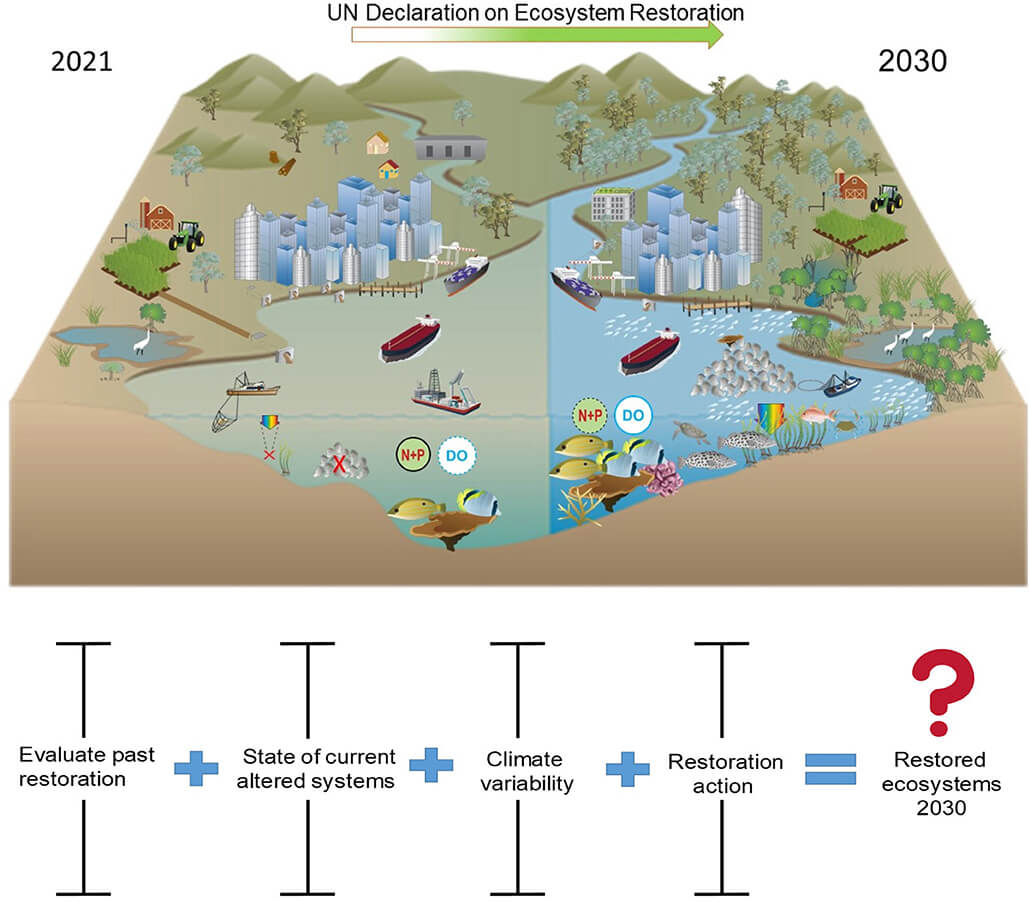Regeneration
Regeneration
What’s the difference between regeneration and restoration? If the end result of regenerative development is that natural systems have regained their ability to sustain and nourish life on this planet, isn’t that just a fancy name for ecological restoration? To begin to make this distinction, it’s important to note that the concept of “restoring” an ecosystem is a bit of a misnomer.
This is because ecosystems are not static – you can’t return an ecosystem to its original condition like you can with a painting or a vintage radio. Like any living thing, an ecosystem can never stand still and can only be in process – either a process of evolution or a process of de-evolution.
So when you “restore” an ecosystem back to a particular state, the question is this: Will it continue to evolve from that point forward? Or will it begin to decline again?
The answer to that question has more to do with how human systems work than how ecosystems work. If the place’s human systems have not themselves transformed, then they will likely repeat the same cycle that caused the ecosystem to require “restoration” in the first place.
Traditional approaches manage this by simply keeping humans as far away from the ecosystem as possible through conservation easements and other instruments for protecting land.
But regenerative development takes a different approach, by asking the question: How can we re-align human activity with this ecosystem’s evolution? How can humans be partners in that evolution?
The answer to that question is different in each unique place. But it’s important to recognize that the question has multiple levels. The first level is a design question – the question of how activities like agriculture, land development, and transportation can be designed to harmonize with and support local natural systems. You might even ask how the activity of restoring the ecosystem itself can be designed so that it can help to transform and build capacity in local people.
But another level, which is critical and all-too-often missing from the conversation, has to do with a community’s narrative about itself. What does this community value about itself? What is it valued for by the larger world? How is that identity connected to the underlying natural systems that made the community what it is? And how can the members of the community be awakened to that connection in a way that unlocks the will to engage, in an organic and sustained way, with the design work that needs to be done at the first level?
It’s when you begin to ask that level of question that you are working on regenerative development.
(Text source: ‘What’s the difference between regeneration and restoration?‘ by Shannon Murphy, published on the Regenesis website, 25 February 2015. Image from UN Decade on Ecosystem Restoration 2021-2030 – What Chance for Success in Restoring Coastal Ecosystems?)
Knowledge Centre
This section contains a small number of documents.
References:
- Regeneration: iconixar from Flaticon
- Knowledge Centre: Freepik from Flaticon
- Information: CleanPNG





